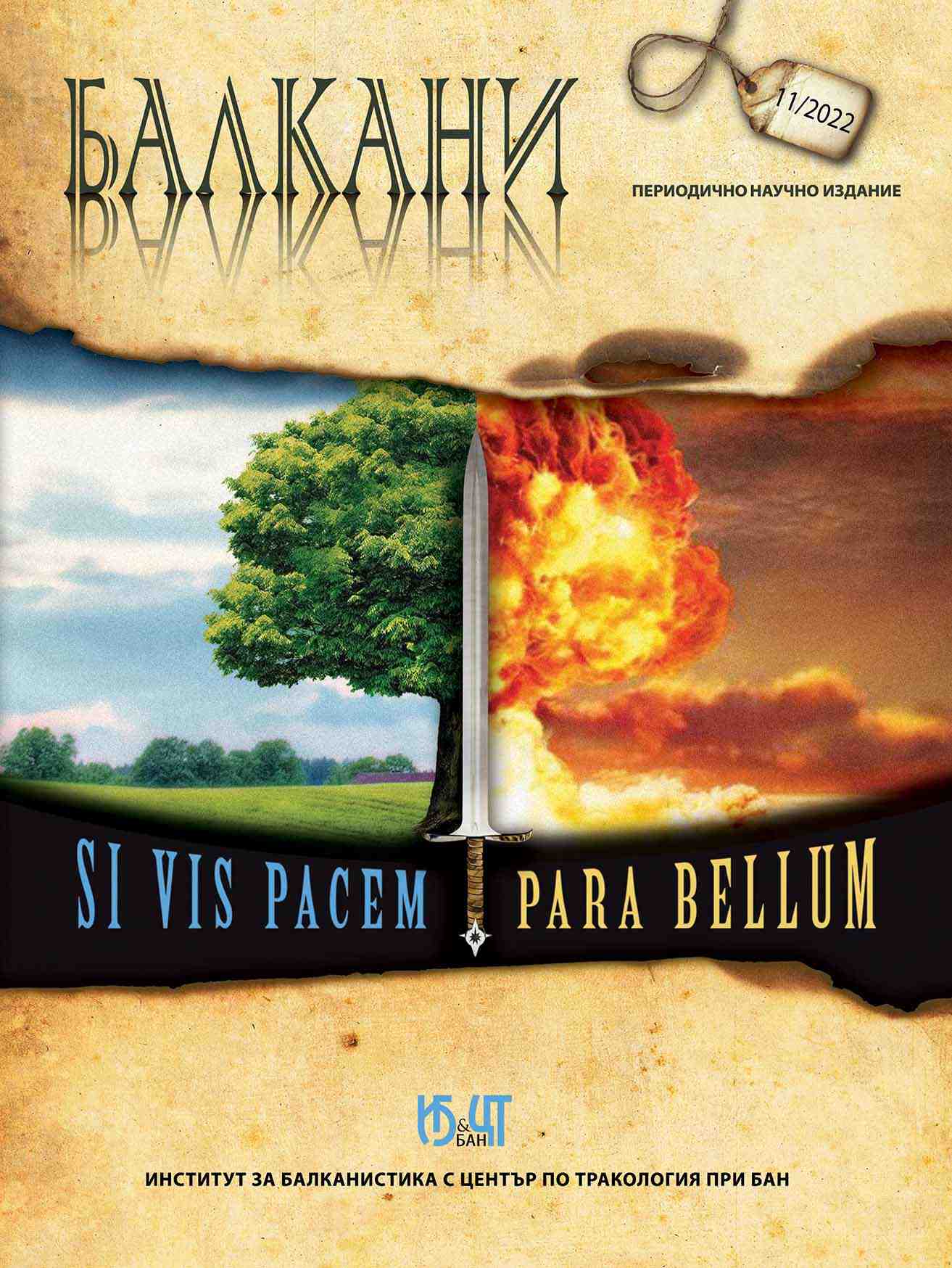ВОЕННОТО ДЕЛО И ХЛАДНИТЕ КЛИНОВИ ОРЪЖИЯ НА КЪСНИТЕ НОМАДИ НА БАЛКАНИТЕ В ПЕРИОДА ОТ КРАЯ НА IX–XI ВЕК
THE WARFARE AND BLADED WEAPONS OF THE LATE NOMADS IN THE BALKANS FROM THE END OF THE 9TH – 11TH CENTURIES
Author(s): Samuil KamburovSubject(s): History, Archaeology, Military history, Middle Ages, 6th to 12th Centuries
Published by: Институт за балканистика с Център по тракология - Българска академия на науките
Keywords: Warfare; Cold Weapons; Sabers; Early Middle Ages; Late Nomads; Magyars; Pechenegs; Byzantine Empire; First Bulgarian Kingdom;
Summary/Abstract: The purpose of this study is to consider and analyze data related to the development of warfare and the distribution of cold weapons in the Balkans, linked to the armament of the so-called “late nomads” in the late 9th – 11th centuries. During this period, various representatives of the Balkans, such as Magyars, Pechenegs, Uzes, and others, passed through the Balkans. All of them left many traces of their military presence. The movement of these nomadic tribes to the southwestern direction and their contacts with the Byzantine lands and the First Bulgarian Kingdom are traced. One of the representatives of the late nomadic tribes – the tribe of Pechenegs was registered initially at the beginning of the 9th century in the lands extended between the Volga and Dnieper rivers. They were living there along with the Magyars. Probably they reached the northern Black Sea steppes in the 830s. There are evidences that after the relocation of the market for Bulgarian goods from Constantinople to Thessaloniki in 894, the Byzantines sought support from the Magyars against the troops of Tsar Simeon during the so-called “First Economic War of Europe”. One of the first contacts between the Pechenegs and the Bulgarians took place when Simeon, fortified in the fortress “Mundraga” (it is assumed that it was located near Madara), made an alliance with the Pechenegs and defeated the Magyars, thus pushing them towards Central Europe. These historical events are evidence that as early as the end of the 9th – beginning of the 10th century, the so-called “late nomads” crossed south of the Lower Danube. In the twenties of the 11th century there was a mass withdrawal of the population south of the Danube to the naturally fortified heights, as then began the mass Pecheneg invasions coming from the northeastern border of Byzantium. In the sixties of the same century, the Uzes joined the raids of the late nomads, and at the end of the 11th century, the Cumans appeared in the lands of the Lower Danube. The main written information about these events was left by John Skylitzes, Anna Komnene, John Zonaras, Michael Attaleiates, and others. The publication pays special attention to the spread of the so-called “Hungarian type” sabers in the lands placed south of the Danube, which are one of the main cold weapons of the late nomadic steppe cavalry. Their initial entry into the territories of the Lower Danube should be linked to the Hungarian invasions in the first years of the reign of Tsar Simeon (893–927). These sabers do not have to be associated only with the Magyars. Really the so-called “Hungarian type” is characteristic, as a whole, of the late nomadic warfare and armaments in the steppe regions of Eastern Europe in the period 9th – 11th century, and their territorial distribution can be traced west to Central Europe. The study of aspects of warfare, and in particular the offensive weapons of the late nomads, is important as it sheds light on their military organization. This, in turn, contributes to the study of the results of the clash of Byzantium and the First Bulgarian Kingdom with the nomadic tribes invading from the northeast to the Balkans in the late ninth – early twelfth century.
Journal: БАЛКАНИ
- Issue Year: 11/2022
- Issue No: 1
- Page Range: 23-41
- Page Count: 19
- Language: Bulgarian

